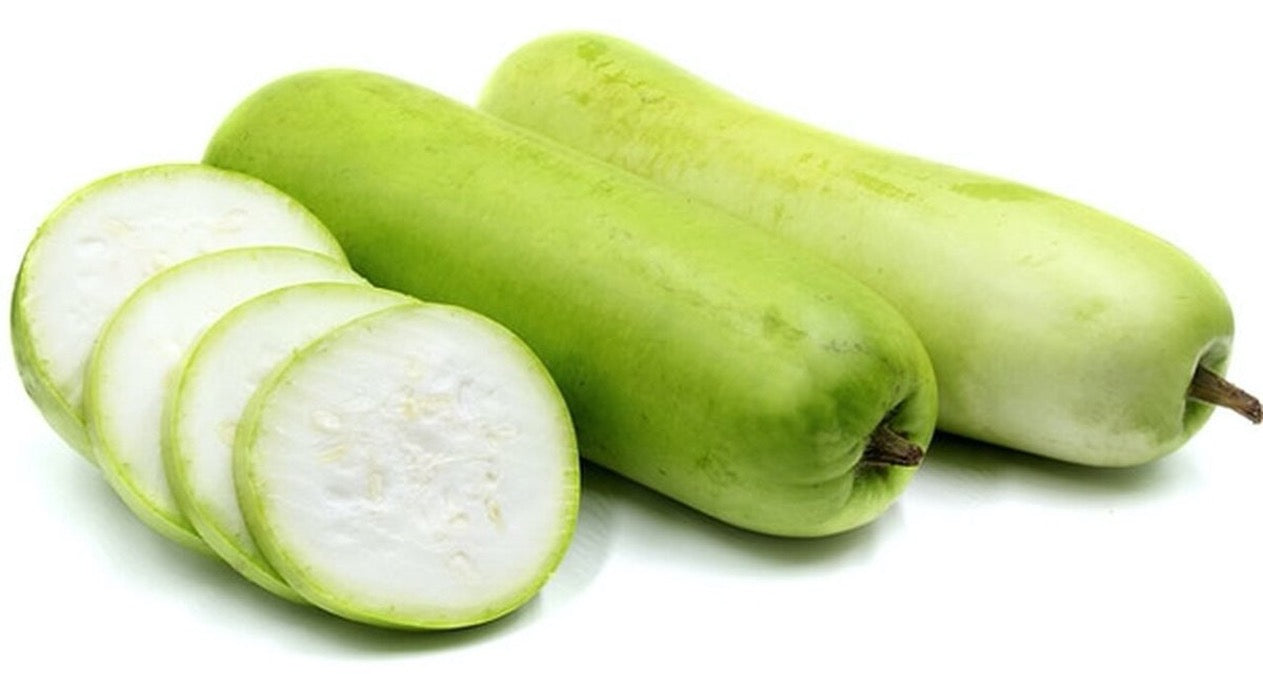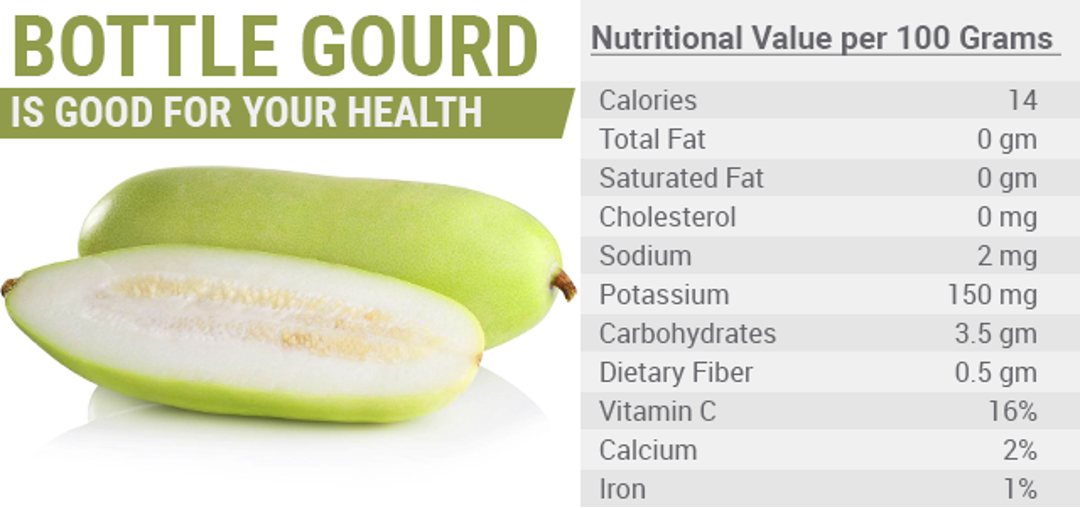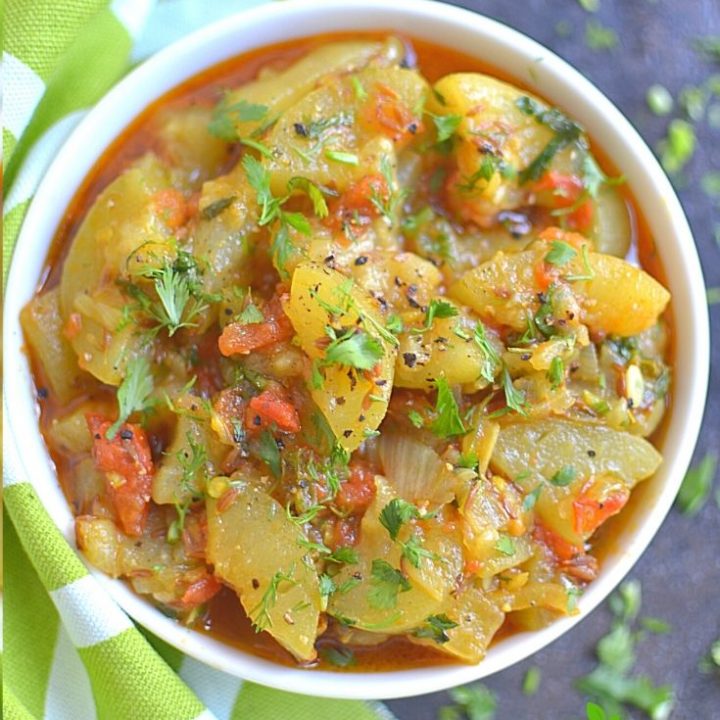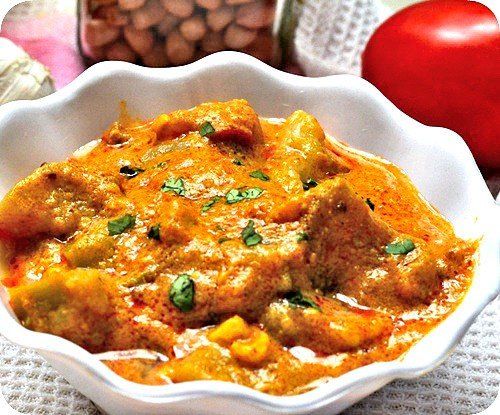Desi Dudhi
- Product Weight: 454 g
- Category: Fresh Fruits & Vegetables, Grocery & Gourmet Foods, Vegetables

Bottle gourd or calabash is a delicately flavored, Cucurbita family vegetable. It is one of the chief culinary vegetables in many tropical and temperate regions around the world.
Botanically, calabash belongs to the broader Cucurbitaceae (gourd) family of plants, in the genus: Lagenaria. Scientific name: Lagenaria siceraria (Molina) Standl. Some of the common names are white-flower gourd, upo-squash (Filipino), long-squash, etc., in the west and doodhi or lauki in the Indian subcontinent.
Bottle gourd is a fast-growing, annual climber (vine) that requires adequate sunlight for flowering and fruiting. It can be grown in a wide range of soils and need trellis support for a spread.
Its intensely branched stems bear musky, deep green, broad leaves just similar as that in pumpkins, and white, monoecious flowers in the summer. After about 75 days from the plantation, young, tender, edible fruits evolve that will be ready for harvesting.
Bottle gourds come in a wide range of shapes and sizes. The fruit features oval, pear-shaped, or elongated and smooth skin that is light green. In the case of round or pear-shaped calabash, their surface is marked by inconspicuous ridges that run lengthwise. Internally, its flesh is white, spongy, and embedded with soft, tiny seeds. As the fruit begins to mature, its seeds gradually grow similar to as that in honeydew melons.
Health benefits of Bottle gourd
-
Bottle gourd is one of the lowest-calorie vegetables- carrying just 14 calories per 100 g. It is one of the vegetables recommended by dieticians in weight-control programs.
-
Fresh gourds contain small quantities of folates, contain about 6 µg/100g (Provide just 1.5% of RDA). Folate helps reduce the incidence of neural tube defects in newborns when taken by anticipant mothers during their early months of pregnancy.
-
Fresh calabash gourd is a modest source of vitamin-C (100 g of raw fruit provides 10 mg or about 17% of RDA). Vitamin-C is one of the powerful natural antioxidants that help scavenge harmful free radicals
-
Calabash facilitates easy digestion and movement of food through the bowel until it is excreted from the body. Thus, it helps in relieving indigestion and constipation problems.
-
Aslo, the vegetable is also a modest source of thiamin, niacin (vitamin B-3), pantothenic acid (vitamin B-5), pyridoxine (vitamin B-6), and minerals such as calcium, iron, zinc, potassium, manganese, and magnesium.
-
Its tender leaves and tendrils are also edible; indeed carry higher concentrations of vitamins and minerals than the bottle gourd fruit.
Bottle gourd or calabash is a delicately flavored, Cucurbita family vegetable. It is one of the chief culinary vegetables in many tropical and temperate regions around the world.
Botanically, calabash belongs to the broader Cucurbitaceae (gourd) family of plants, in the genus: Lagenaria. Scientific name: Lagenaria siceraria (Molina) Standl. Some of the common names are white-flower gourd, upo-squash (Filipino), long-squash, etc., in the west and doodhi or lauki in the Indian subcontinent.
Bottle gourd is a fast-growing, annual climber (vine) that requires adequate sunlight for flowering and fruiting. It can be grown in a wide range of soils and need trellis support for a spread.
Its intensely branched stems bear musky, deep green, broad leaves just similar as that in pumpkins, and white, monoecious flowers in the summer. After about 75 days from the plantation, young, tender, edible fruits evolve that will be ready for harvesting.
Bottle gourds come in a wide range of shapes and sizes. The fruit features oval, pear-shaped, or elongated and smooth skin that is light green. In the case of round or pear-shaped calabash, their surface is marked by inconspicuous ridges that run lengthwise. Internally, its flesh is white, spongy, and embedded with soft, tiny seeds. As the fruit begins to mature, its seeds gradually grow similar to as that in honeydew melons.
Health benefits of Bottle gourd
-
Bottle gourd is one of the lowest-calorie vegetables- carrying just 14 calories per 100 g. It is one of the vegetables recommended by dieticians in weight-control programs.
-
Fresh gourds contain small quantities of folates, contain about 6 µg/100g (Provide just 1.5% of RDA). Folate helps reduce the incidence of neural tube defects in newborns when taken by anticipant mothers during their early months of pregnancy.
-
Fresh calabash gourd is a modest source of vitamin-C (100 g of raw fruit provides 10 mg or about 17% of RDA). Vitamin-C is one of the powerful natural antioxidants that help scavenge harmful free radicals
-
Calabash facilitates easy digestion and movement of food through the bowel until it is excreted from the body. Thus, it helps in relieving indigestion and constipation problems.
-
Aslo, the vegetable is also a modest source of thiamin, niacin (vitamin B-3), pantothenic acid (vitamin B-5), pyridoxine (vitamin B-6), and minerals such as calcium, iron, zinc, potassium, manganese, and magnesium.
-
Its tender leaves and tendrils are also edible; indeed carry higher concentrations of vitamins and minerals than the bottle gourd fruit.




































